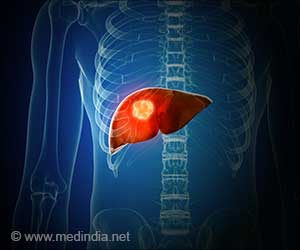Supercomputers can now be used in case of health emergencies like predicting about the development of a diseases and its course as well
Supercomputers can now be used during health emergencies like predicting about the development of a diseases and its course as well. Scientists have devised a simulator, which could make stark predictions about the possible course of bird flu pandemic based on today's environment of worldwide connectivity. The research, by a team of scientists from Los Alamos National Laboratory in New Mexico, the University of Washington and the Fred Hutchinson Cancer Research Center in Seattle, is presented in the Proceedings of the National Academy of Science online the week of April 3-7, and in the print issue of April 11.
The large-scale, stochastic simulation model examines the nationwide spread of a pandemic influenza virus strain, such as an evolved avian H5N1 virus, should it become transmissible human-to-human. The simulation rolls out a city- and census-tract-level picture of the spread of infection through a synthetic population of 281 million people over the course of 180 days, and examines the impact of interventions, from antiviral therapy to school closures and travel restrictions, as the vaccine industry struggles to catch up with the evolving virus.“Based on the present work . . . we believe that a large stockpile of avian influenza-based vaccine containing potential pandemic influenza antigens, coupled with the capacity to rapidly make a better-matched vaccine based on human strains, would be the best strategy to mitigate pandemic influenza,” say the authors, Timothy Germann, Kai Kadau, Ira Longini and Catherine Macken.
“It's probably not going to be practical to contain a potential pandemic by merely trying to limit contact between people (such as by travel restrictions, quarantine or even closing schools), but we find that these measures are useful in buying time to produce and distribute sufficient quantities of vaccine and antiviral drugs,” said Germann of Los Alamos’ Applied Physics Division.
“Based on our results, combinations of mitigation strategies such as stockpiling vaccines or antiviral agents, along with social distancing measures could be particularly effective in slowing pandemic flu spread in the U.S.,” added Longini.
The results show that advance preparation of a modestly effective vaccine in large quantities appears to be preferable to waiting for the development of a well-matched vaccine that may not become available until a pandemic has already reached the United States.
“Because it is currently impossible to predict which of the diverging strains of avian H5N1 influenza virus is most likely to adapt to human transmission, studies of broadly cross-reactive avian-influenza based vaccines with even modest immunogenicity in humans are important,” said Macken, an influenza researcher in the Los Alamos Theoretical Division. Ideally, both vaccine strategies would be done in parallel: Stockpile a modestly effective vaccine to use while the better-matched one is being developed, the authors suggest.
“In the highly mobile U.S. population, travel restrictions alone will not be enough to stop the spread; a mixture of many mitigation strategies is more likely to be effective than a few strictly enforced ones,” said Kadau, also of Los Alamos’ Theoretical Division.
Other elements of randomness modify the simulated disease course. A significant fraction of infected people (33 percent in the present model) never develop clinical symptoms, although they are themselves infectious. In addition, the durations of the incubation and infectious periods can vary and are randomly chosen from distribution functions for each individual, involving more throws of the virtual dice.
“Computer models serve as virtual laboratories where researchers can study how infectious diseases might spread and what intervention strategies may lessen the impact of a real outbreak,” said Jeremy M. Berg, director of the National Institute of General Medical Sciences. “This new work exemplifies the power of such models and could aid policymakers and health officials as they plan for a possible future pandemic.”
The pandemic simulation model has been implemented in the Laboratory’s celebrated Scalable Parallel Short-range Molecular dynamics (SPaSM) large-scale simulation platform developed for the nuclear weapons program. It runs on the Los Alamos supercomputer known as Pink, a 1,024-node (2,048 processor) LinuxBIOS/BProc “Science Appliance” running Clustermatic 3, the largest single-system image Linux cluster in the world. Pink's nodes have dual 2.4 GHz Intel Xeon processors (Pentium 4) with 2 gigabytes of memory per node. The purchase of the Science Appliance was funded by the National Nuclear Security Administration's Advanced Simulation and Computing program.Pink is currently a system software research platform, a science appliance cluster concept invented at Los Alamos in the Computer and Computational Science Division. Los Alamos has four science appliance clusters in use at this time for a variety of projects across the full range of Laboratory mission areas.
--EurekAlert







